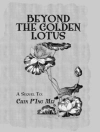A compelling story about three murders in Brooklyn between 1872 and 1873 and the young women charged with the crimes.
Between January 1872 and September 1873, the city of Brooklyn was gripped by accounts of three murders allegedly committed by young women: a factory girl shot her employer and seducer, an evidently peculiar woman shot a philandering member of a prominent Brooklyn family, and a former nun was arrested on suspicion of having hanged her best friend and onetime convent mate. Two were detained at the county jail on Raymond Street, while one remained at large, and her pursuit and eventual arrest was complicated by dissension in the police department. Lawyers for all three women prepared insanity defenses, and citizens thronged the courtrooms to witness the suspenseful trials. An intriguing account of the events surrounding the cases, which became entwined with Brooklyn’s politics and religious differences, The Three Graces of Raymond Street offers insights into the sexual mores of the times and illustrates the development of the modern American city.
Table des matières
Acknowledgments
1. Living Dangerously
City Air Breathes Free
He told Her Not to Do It
A Terrible Thing to Tell
Lost City
2. Jailhouse and Courthouse
Fanny of Raymond Street
You Have Had Me
Look at Her Now
Adulterous, Militant Brooklyn
3. Her Poor Betsey
Come in Here and See Him
My God, It Is Plain!
The Same Type of Woman
By Other Names
Queer Crime, Queerer Woman
The Positions that They’re In
photo gallery after page 114
4. Three Graces
Sarah and Maggie: A Very Strange Ending
A Sealed Confession?
Sarah, Kate, and Lucette of Raymond Street
Brooklyn’s Lesser Scandal, Continued
5. Women and The Law
A Fourth Grace
Last Words
Seems Like a Dream
Remembered and Forgotten
Notes
Bibliography
Index
A propos de l’auteur
Robert E. Murphy is the author of Brooklyn Union: A Centennial History and After Many a Summer: The Passing of the Giants and Dodgers and a Golden Age in New York Baseball. He lives in Brooklyn.












